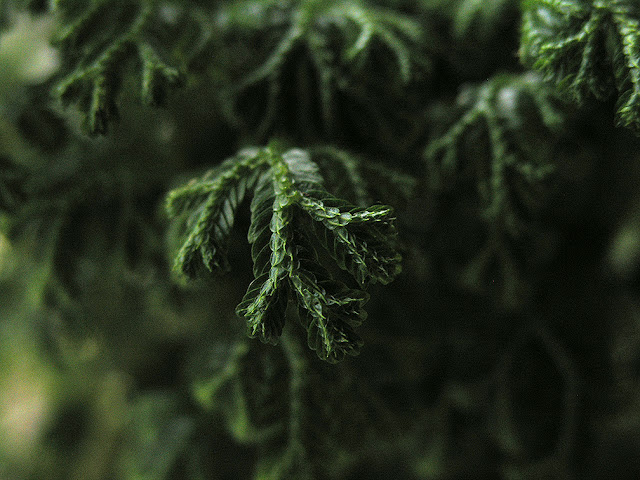 |
| Slipper Orchid Paphiopedilum glaucophyllum on vellum, 12" x 9". |
In April I had the opportunity to take a workshop with Carol Woodin at USBG on painting orchids on vellum. Painting on vellum was something I really wanted to learn--the techniques are very different from watercolor painting on paper. Since vellum can easily buckle with moisture, it's essential to apply the paints very dry, in thin layers, and build up the color gradually. I had read about this, but wasn't quite sure how dry the paint needs to be.
USBG brought out a group of lovely orchids from their collection for us to work from. I chose this delicate-looking Paph--Paphiopedilum glaucophyllum--for my painting. Many of the other orchids had wild colors: yellow, orange, magenta and purple, that were appealing but seemed too difficult to deal with.
 |
| Photo of Paphiopedilum glaucophyllum on my stand. |
I struggled with the composition of my drawing, trying to give a sense of the winding stems and their bracts. I noticed that this species of Paph is of a type that has multiple flowers on one stem and a small bud could be seen beside the open flower in front (most of the Paphs I've previously seen had only one flower per stem). The hairy spotted petals were one of the features that attracted me to this species.
Transferring the drawing to the vellum presented another problem--without a light table, it's very difficult to put graphite lightly on the back of the drawing and get much to go on the vellum, so one had to re-draw a good bit of the original drawing with the slim guidance given by barely-readable linework.
Once I started to apply the paint, putting an even wash with a dry brush was another challenge. Even more challenging was adding layers to the previous washed to build up the color--the slightest dampness tended to lift the previous layers to create "holes" or streaks that were hard to deal with.
Carol was very patient explaining how to repair these problems. Most of my classmates had a little more experience painting on vellum than I, and many obtained wonderful results with their pieces, bringing their expertise to bear on their particular orchids.
 |
| Paphiopedilum painting on vellum by Cristina Baltayian |
The workshop breezed by very quickly, my piece is not quite finished but I managed to get enough on paper to give an idea of this specific orchid. I can see it's going to take a lot of practice for me to get these techniques down, and I hope to have the time to devote to it.
 |
| Paphiopedilum painting on vellum by Renee Johnson |












































